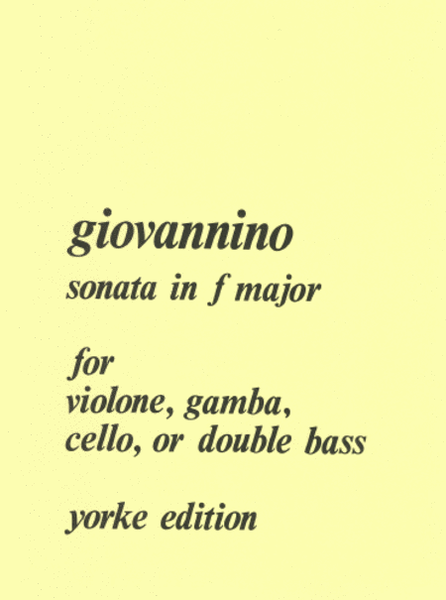Sonata In F Major
For Violone
-
Ships in 2 to 3 weeks
Details
Description
SKU: BT.YE0009
For Violone. Composed by Giovannino. Classical. Book Only. Yorke Edition #YE0009. Published by Yorke Edition (BT.YE0009).Very little is known about the two sonatas which appear here in their original keys. They were placed in the library of the Music School in Oxford at the end of the seventeenth century in a form convenient for playing (i.e.unbound). The library was catalogued by Hake between 1850 and 1855 and the sonatas were eventually bound in 1855 with other instrumental and vocal manuscripts of the same period, some of which are dated 1698.
The sonatasare both inscribed on the title page Sonata Violone Solo. Col Basso per l'Organo, o Cembalo. A third sonata bears the words Sonata Violino e Violoncino … di Giovannino del Violone. Giovannino (=Little, or Young John)musthave been a performer, and although the third sonata has been copied by a different hand, it is conceivable that Giovannino is a connecting link between the three. He cannot, however, be assumed to be theirauthor.
The Violone was a six-stringed instrument with frets, and there is evidence to suggest that the Contrabasso of the same period was similar but probably a little larger; the Violoncino (=Little Violone, orVioloncello) must have been smaller. The word 'Violone' was also used as a collective term embracing all members of the Viol family, which means that the sonatas might well have been written for a tenor or a bass Viol, and notnecessarily a Violone as such. Indeed, when they are played on a Violone, or Double Bass the continuo bass line must be played at a lower pitch than the solo instrument, to prevent inversion of the intended harmony. (The use ofa Violone/Double Bass continuo or 16' organ tone would overcome this problem.)
The editor has added no ornaments or embellishments to the solo part as it appears in the original manuscript. It is open to debate whether aViolone player, owing to the very nature of his instrument, would have used any but the simplest melodic decorations. Nevertheless, the performer should acquaint himself thoroughly with those seventeenth century traditions thatare known today (see Dart.

 Share
Share